THINK BIG
By Thomas Connors
PHOTOGRAPHY BY KATRINA WITTKAMP
STYLING BY THERESA DEMARIA
PHOTOGRAPHED AT ANNE LOUCKS GALLERY IN GLENCOE
Artist Adam Siegel photographed at Anne Loucks Gallery
By Thomas Connors
PHOTOGRAPHY BY KATRINA WITTKAMP
STYLING BY THERESA DEMARIA
PHOTOGRAPHED AT ANNE LOUCKS GALLERY IN GLENCOE
Artist Adam Siegel photographed at Anne Loucks Gallery

Contemporary art isn’t always easy to take. Even the most adventurous gallery-goer has been stumped by something that looks more like an accident than a composition. Yet, paintings by Kenilworth’s Adam Siegel are proof that powerful art doesn’t need to transgress to stimulate one’s imagination and challenge the conscience.
Siegel has been an artist all his life. The son of noted photographer Arthur Siegel, who studied under László Moholy-Nagy at The New Bauhaus at the Illinois Institute of Technology, Siegel grew up in Lincoln Park. His father and mother, Irene, an artist herself, often welcomed fellow creatives and intellectuals into the house, such as architect Mies van der Rohe. Even at an early age, encountering the cultural elite of the city made Siegel aware of “what it’s like to be a fully developed personality with a point of view.”
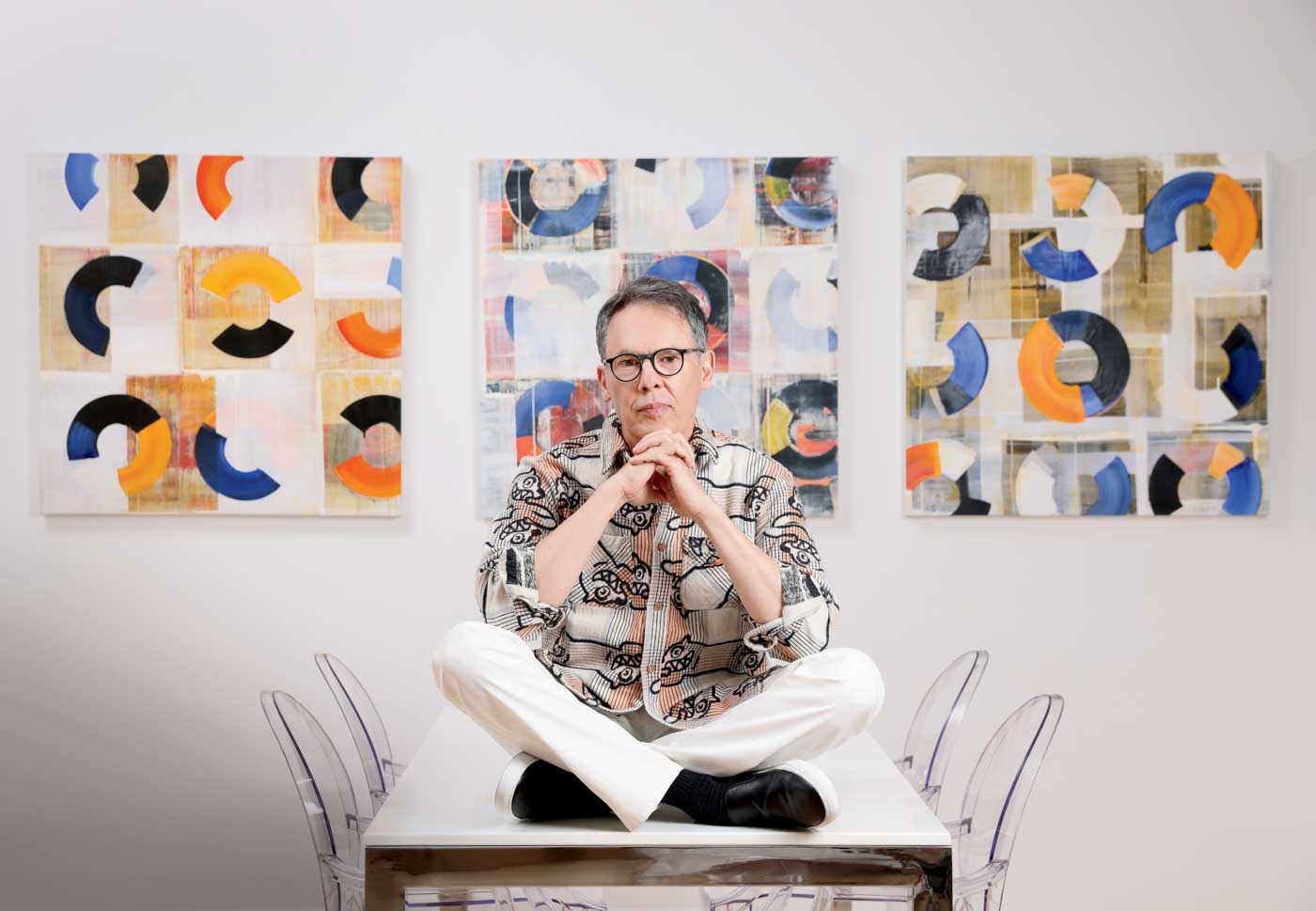
While his father “very purposefully did not” teach him about photography, he did let him wander those get-togethers with a Leica camera around his neck. And when grad students came over to present their theses, Siegel stood and listened over their shoulders. Plus, it didn’t hurt to have Ansel Adams’ most famous image—Moonrise, Hernandez, New Mexico—hanging on the wall outside his bedroom. As a teen at Francis Parker, Siegel was big on track and field. Then he changed course. “I was putting a lot of time into running and suddenly decided I should put that energy into something else,” he recalls. “So, I decided to go photograph every day and take that as seriously as I had running. I ended up doing a series on the beach, of people and objects. After developing the images in the darkroom, I went back to the beach and buried the prints under the sand, leaving parts of them exposed and re-photographed them.”
Siegel got a degree in Japanese studies at Oberlin College, spending a year in the country, absorbing every aspect of its culture and traditions. He traces his own singular aesthetic to that formative experience. “In Japan, you have basic elements—rock, bamboo, wood, and paper. It’s all about the artful arrangement of those formative elements and how those base materials can represent the equivalent parts of our psyche. To this day that is pretty much how my work is built, it’s the relationship between basic elements and how they refer to archetypal qualities in nature and in ourselves. Pattern, color, shape, and material quality are related to how we feel about ourselves and how we respond to things, consciously and unconsciously.”
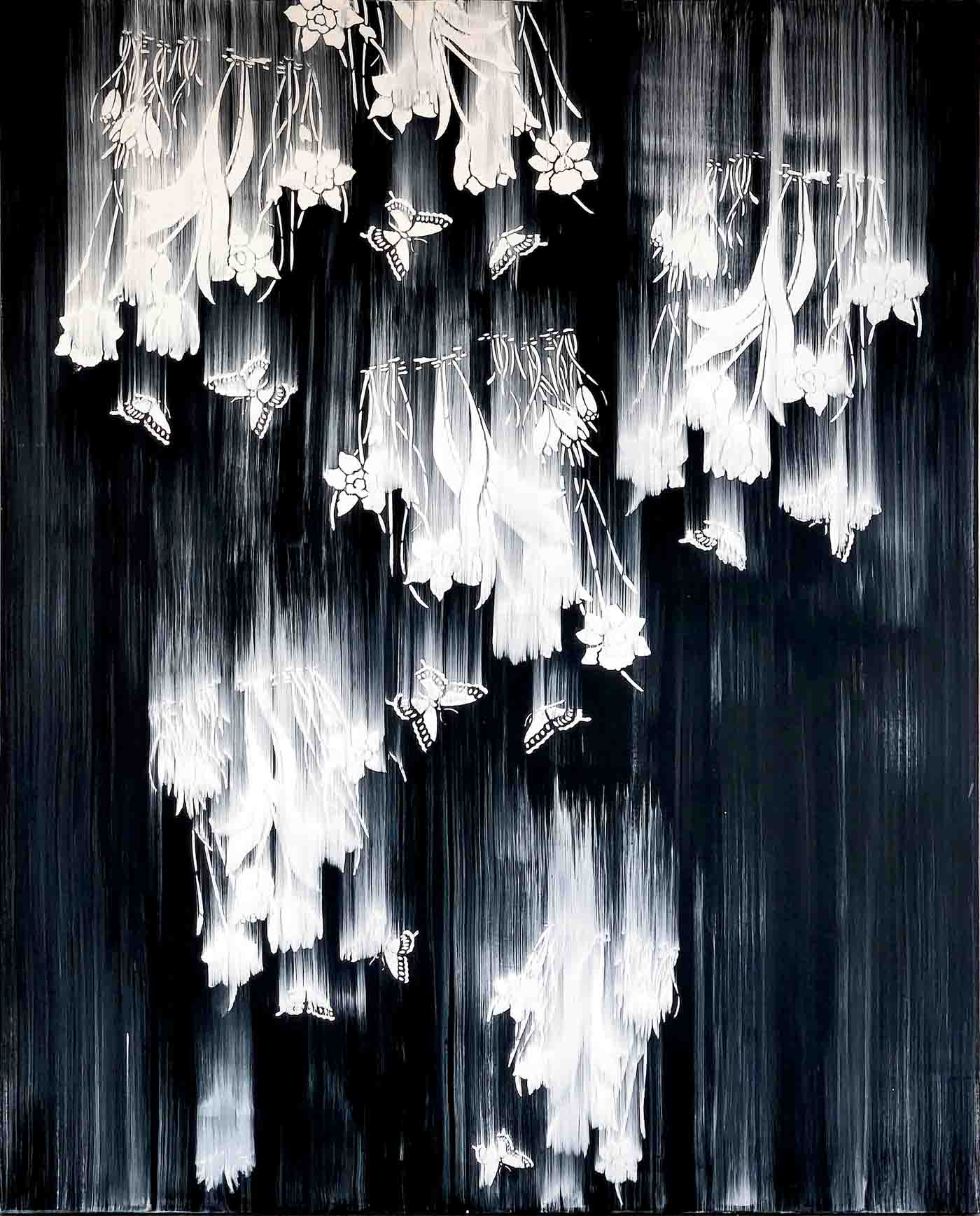
Over time, Siegel—who had his first solo show on Michigan Avenue at age 19—began to produce larger and larger works. “This was back when we were still working solely with film, and I came to the realization that I didn’t have the equipment to execute the works as large as I wanted them,” he shares. “I felt the medium was fighting my conception. Having to develop the images in the darkroom deprived me of the kind of immediacy of process I was looking for. So, I made a very innocent decision and switched to painting. But it took more than 15 years for me to feel as comfortable with paint as I had with photography.” In recent years, he created a 9/11 memorial in partnership with the Museum of Contemporary Art, the Northwestern Specialists for Women clinic acquired 75 of his paintings and photographs, and his work was featured in HBO’s Succession. Additionally, he collaborated with noted chef and restaurateur Grant Achatz on a pop-up restaurant titled The Progression, which included 27 large-scale works. Roister Restaurant, the chef ’s latest outing, features a single large work of Siegel’s in its main dining room.
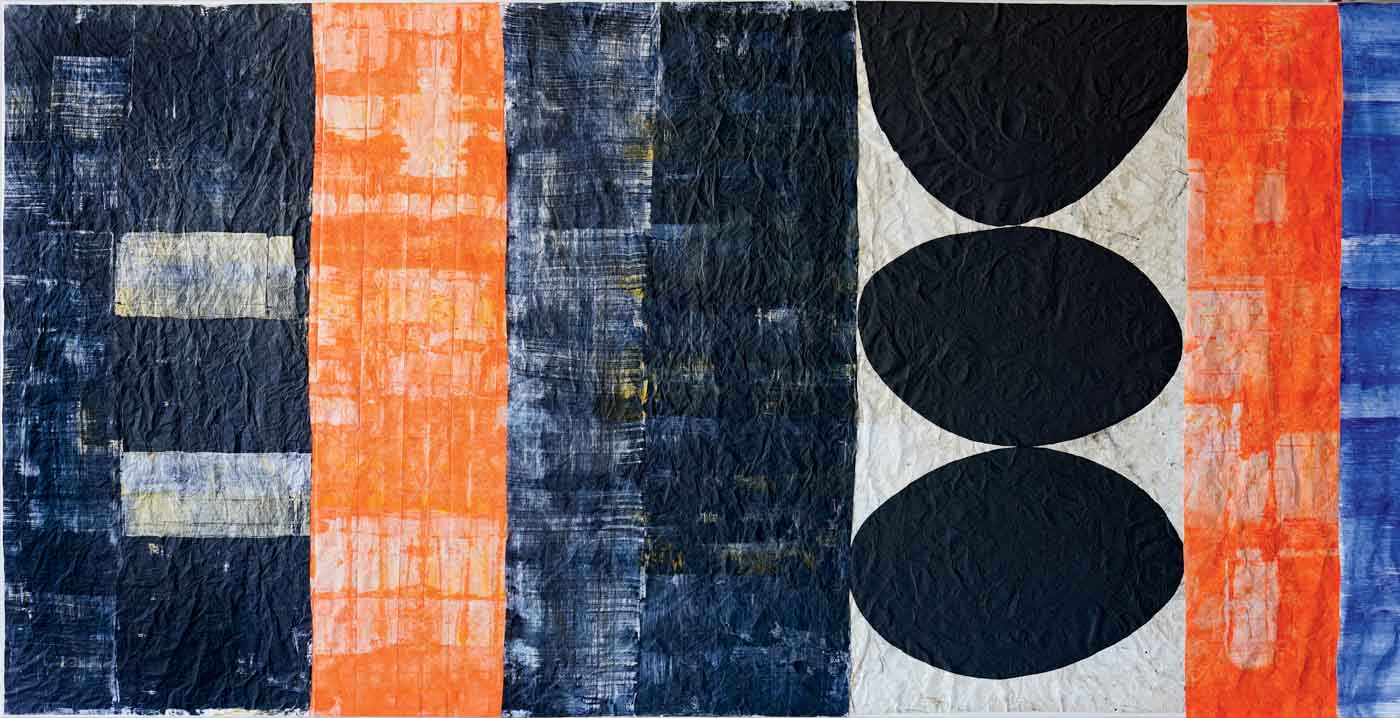

Today, color and scale are central to Siegel’s work. The pieces he is showing at Winnetka’s Anne Loucks Gallery and at The Art Center Highland Park are the latest manifestations of his deep commitment to creating work that inhabits space as certainly as our own bodies and that functions as a portal to understanding beyond our immediate actuality. The large-scale works combine solid blocks of color, almost watercolor-like areas, with a white ground seeping through and contrasting gestural figurations that read somewhere between seagrass dancing in water and the swipes of Cy Twombly. Additionally, Siegel will be featuring works from his Panorama series incorporating antique landscape images combined with his penchant for bold colorful geometries. “Encountering color,” notes Siegel, “generates changes in the viewer, chemical changes in the blood that give you a certain feeling. And large canvases can be all-embracing, like a sunset. They become equivalents for our experience of nature.”
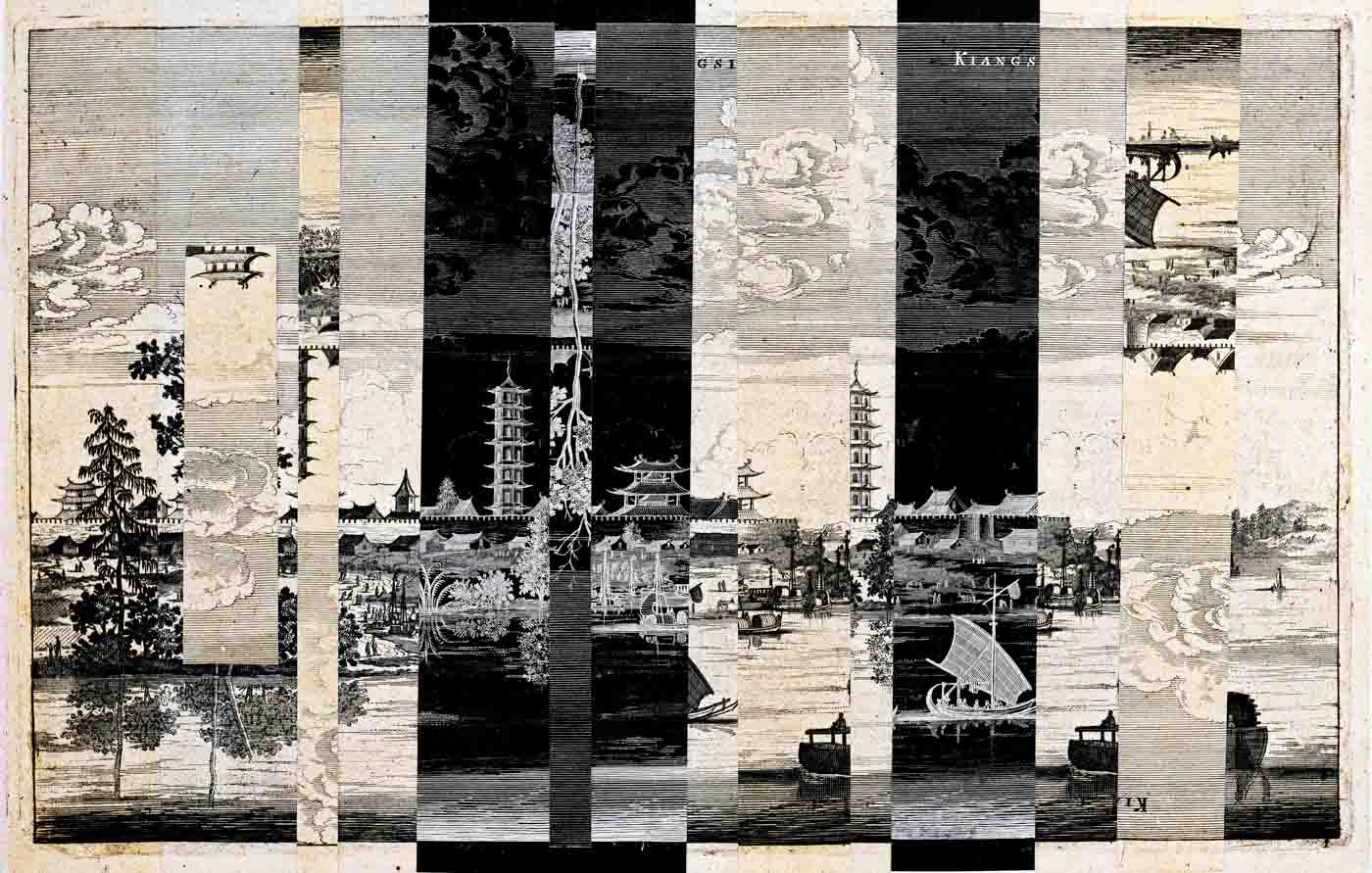
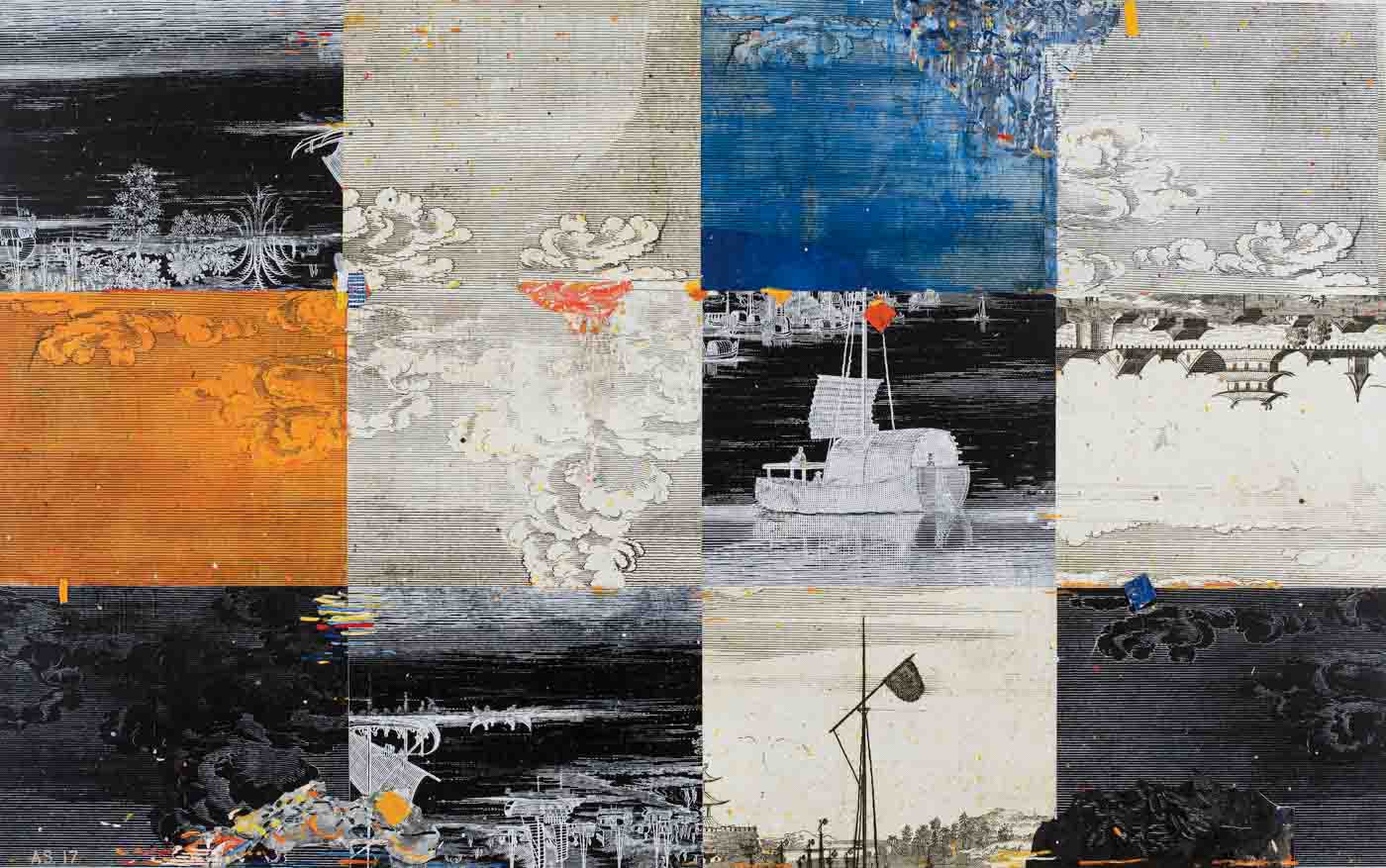
There’s something to be said for getting lost in a work of art. And these are works to wander in. We may not know where we are going or where the journey will take us. But as Robert Louis Stevenson knew, sometimes, “It is better to travel hopefully than to arrive.”
Adam Siegel: Beneath the Surface will be on view at Anne Loucks Gallery’s new space at 564 Lincoln Avenue in Winnetka from June 11 to July 31. For more information, visit loucksgallery.com. Adam Siegel: Work, featuring large-scale works will be on view at The Art Center Highland Park at 1957 Sheridan Road through June 15. For more information, visit theartcenterhp.org.
Sign Up for the JWC Media Email